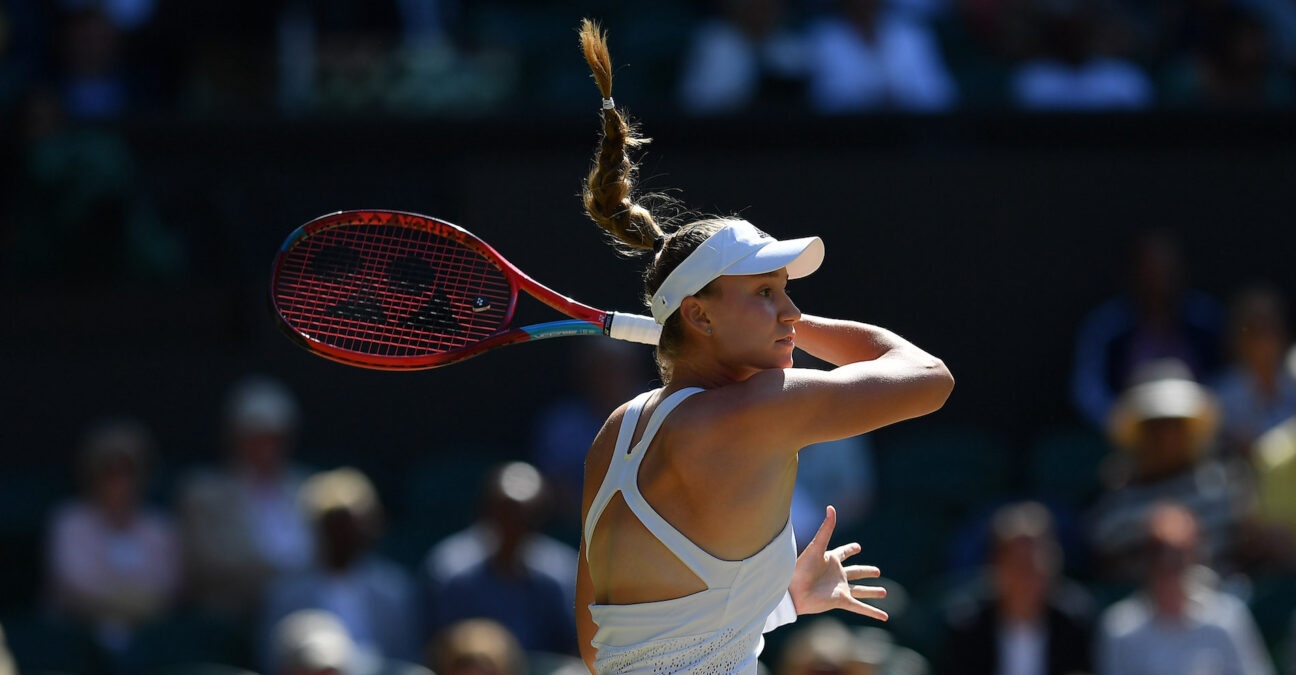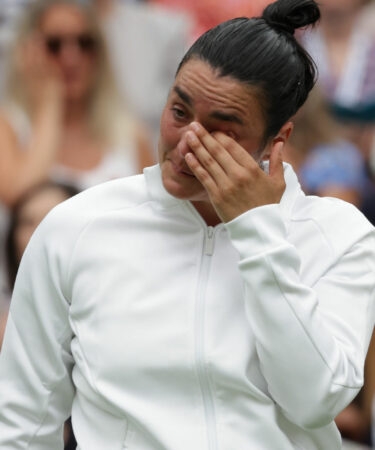Rybakina: a serve “as fast as Djokovic” and an aggressiveness that is expressed “in many different ways”
Elena Rybakina impressed on Thursday by crushing Simona Halep in the Wimbledon semi-finals. The 6′ Kazakh is into her maiden Slam final, with an explosive service, “as fast as that of Djokovic”, says the director of performance of Kazakhstan.
 Elena Rybakina, Wimbledon 2022 © AI / Reuters / panoramic
Elena Rybakina, Wimbledon 2022 © AI / Reuters / panoramic
Over the last few days, as Elena Rybakina’s blows tormented Simona Halep and Ons Jabeur, and left divots in the hallowed turf of Wimbledon, to seemingly enter our living rooms, attacking our peaceful tranquility with tennis’ version of an ice pick. We had already seen our share of it, however.
Earlier in the week, the indestructible Rafael Nadal had defeated Taylor Fritz despite the pain, but it was the blossoming Rybakina, spraying artillery, who could have torn seven millimetres from the abdomen of the mighty Spaniard with shrapnel – grass clippings that kicked up from her heat-seeking ground strokes.
Nadal has since withdrawn. The Kazakh is the new Wimbledon ladies’ singles champion and though she is 23, Rybakina is no child.
Small, she is not. Six feet tall and lethal; 53 aces were struck during her run to the title at Wimbledon, with services struck at nearly 200 km per hour: Rybakina has become the worst nightmare of her opposition, a crushing and cruising machine on the court, with a style of her own and a story that she continues to write with each match.
“What an incredible story,” Rybakina allowed herself to let go despite her reservedness.
To the question, “What is your style of play?” after her win over Halep, Rybakina’s response flies off her lips like those earth-shattering forehands she hits: “Very aggressive.” Point. And smile. “I know I have this ‘gift’,” she explains. “I’m tall, and I’m very fast.”
The first serve of Rybakina as fast as Djokovic’s
The Russian, who became a naturalised Kazakh in July 2018 (but still lives in Moscow), is impressive on all fronts.
“That’s the key to her game,” says Dave Miley, Performance Director at the Kazakh Tennis Federation. “She serves as hard as (Novak) Djokovic on the first serve!”
Not false. Against Jabeur, Rybakina’s fastest first serve was flashed at 122 mph. On Friday, during his victory against Cameron Norrie, Djokovic‘s fastest serve flirted with… 123 mph.
“But there would be no point in hitting so hard if she didn’t put any in the court”, Miley says.
However, we saw against Halep that Rybakina was more and more consistent. Rybakina indeed hit 69 percent of first serves in.
“I think it’s the best game I’ve seen from her,” admits Miley.
“I don’t make a particular effort to hit so hard,” Rybakina explained at a press conference on Thursday. “It’s not even something I work on. It’s just my main weapon.”
Anything but a surprise
Prior to the Wimbledon semi-finals, Rybakina hit 44 forehand winners, more than any other player in the last four (with Jabeur, Halep, and Maria). The Kazakh is “anything but a surprise” for Miley.
“Rybakina was always aggressive like that. Above all, she can play in many different ways.”
This is one of Rybakina’s strengths. Despite her height, the Kazakh moves quickly. And transitions with aplomb. She won, before the semi-finals, 50 of her 75 net approaches, again the leader of the four women’s singles semi-finalists at Wimbledon.
“She manages to move her opponent well on the court,” deadpans Miley.
This allows her to win most of the “rallies” she competes in. The Kazakh won 64 percent of rallies of more than 5 shots before the semis. In comparison, Jabeur, her opponent in the final, won 49 percent.
“Elena at 23… Let’s not forget that Federer won his first Major at 23!” says Miley, believing in the potential of his charge, and why shouldn’t he?









